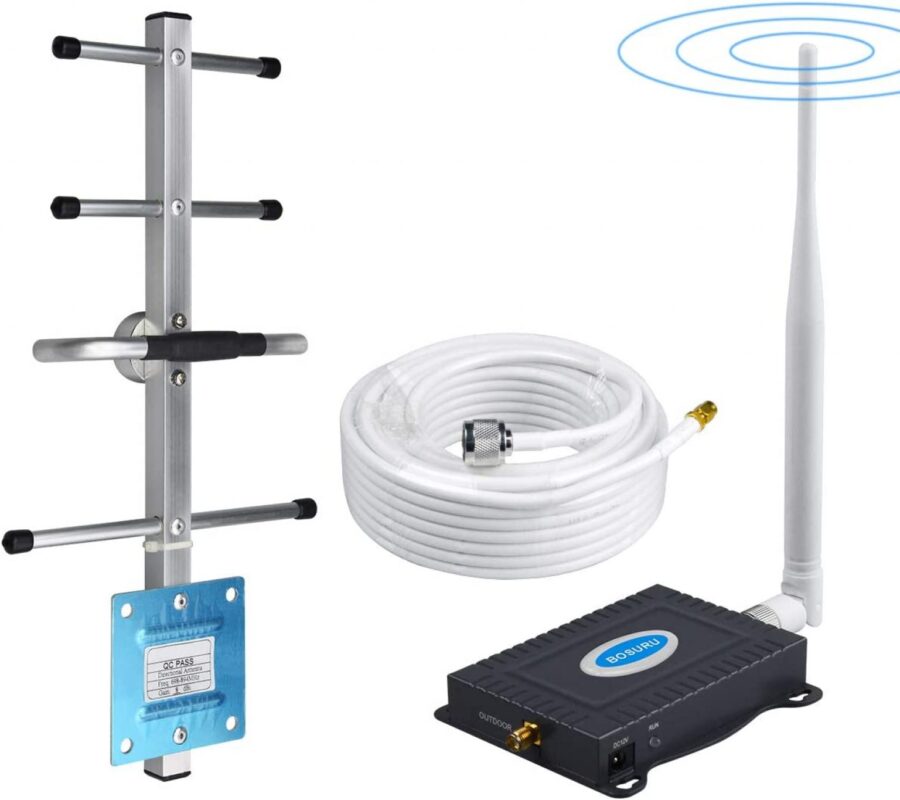#9811540788 mobile signal booster dealer in Mumbai and Navi Mumbai
Mobile network booster shop in Mumbai and Thane
Signal booster installation service in Delhi, Noida Ghaziabad and Gurgaon.

A mobile network booster, also known as a signal booster or repeater, is a device designed to enhance the strength and quality of mobile signals. This is especially useful in areas where cell signal is weak due to distance from cell towers, obstacles like buildings or mountains, or other environmental factors. Here’s an overview of how a mobile network booster works and the typical accessories needed for installation.
How a Mobile Network Booster Works
- Receiving the Signal: The booster setup begins with an outdoor antenna, typically mounted on the roof or an exterior wall, in a location with the best possible signal reception. This antenna captures weak cellular signals from the nearest cell tower.
- Amplifying the Signal: The outdoor antenna is connected to an amplifier, the core component of a booster, via a coaxial cable. Once the weak signal reaches the amplifier, the device boosts the signal’s strength significantly. Amplifiers are designed to work with various network frequencies, such as 3G, 4G LTE, and 5G.
- Broadcasting the Signal Indoors: After amplifying, the signal travels through another coaxial cable to an indoor antenna, which is installed inside the building. The indoor antenna broadcasts the amplified signal throughout the area, ensuring that devices within range have improved signal strength for calls, texts, and data usage.
- Sending Signals Back to the Tower: The process also works in reverse when you make a call or use data on your device. Your device sends a signal back to the booster, which then amplifies and sends it out through the outdoor antenna to the cell tower. This two-way process ensures consistent communication between your mobile device and the network.
Key Accessories for Installation
- Outdoor Antenna: The outdoor antenna is critical for capturing weak signals. Common types include Yagi antennas, which are directional and require alignment towards the cell tower, and omnidirectional antennas, which receive signals from multiple directions and are easier to install.
- Coaxial Cable: High-quality coaxial cables connect the outdoor antenna to the amplifier and the amplifier to the indoor antenna. These cables need to be durable and are typically shielded to minimize signal loss.
- Signal Amplifier (Booster): The amplifier is the heart of the system. It boosts the signal strength received from the outdoor antenna, allowing it to cover a specified indoor area. Amplifiers come with various power ratings depending on the coverage needed.
- Indoor Antenna: The indoor antenna distributes the amplified signal throughout the designated area. There are different types of indoor antennas, such as panel antennas, which are directional, and dome antennas, which broadcast signals in all directions.
- Mounting Equipment: This includes brackets, screws, and mounting poles required for securing the outdoor and indoor antennas. Proper mounting is essential to ensure antennas are stable and aligned correctly for optimal performance.
- Power Supply: A mobile network booster requires a power source to operate. Typically, a standard AC adapter is included to power the amplifier.
Installation Process
- Identify the Best Signal Location: Use a mobile device to locate the area outside the building with the strongest signal, usually on the roof or a high exterior wall.
- Install the Outdoor Antenna: Mount the outdoor antenna in the location with the best signal. Ensure that it’s aligned towards the nearest cell tower if using a directional antenna.
- Run Coaxial Cable: Connect the outdoor antenna to the amplifier with a coaxial cable. Carefully route the cable to avoid sharp bends or areas with potential interference.
- Place the Amplifier Indoors: Position the amplifier in a central location to maximize coverage. Connect the coaxial cable from the outdoor antenna and attach the power supply.
- Install the Indoor Antenna: Mount the indoor antenna in an optimal location to cover the intended area. Connect it to the amplifier with another coaxial cable.
- Power On and Test: Once everything is set up, turn on the amplifier. Use a mobile device to test the signal strength in different areas to confirm improved coverage. Adjust the indoor or outdoor antenna positions if needed.
